USB 3.1,Type-C,规范标准
发布日期:2023-09-25
点击次数:502
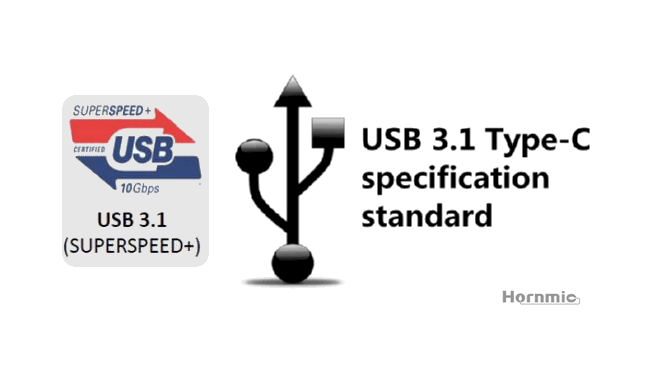
USB 3.1 Type-C specification standard (v1.4) and USB3.1 detailed explanation
By April 2019, the latest version of the USB 3.1 TYPE-C specification has been upgraded to version 1.4, Type-C manual specifications, standards, there are a variety of Type-C connectors, cable standards, within the Type-C audio adapter standards, the Association‘s specifications are is the necessary manual for USB development, design.
USB-C, formally known as USB Type-C, is a 24-pin USB connector system, which is distinguished by its two-fold rotationally-symmetrical connector.
Type-C Pin Ounts Functions (Receptacle):
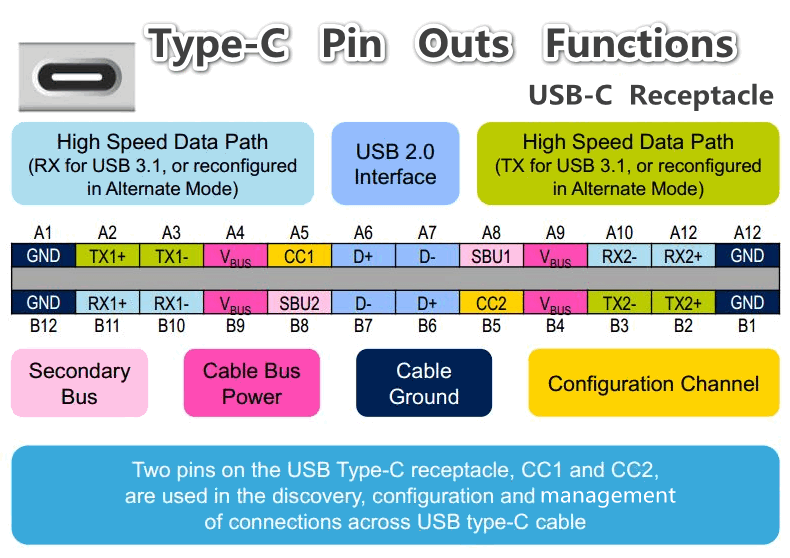
Type-C Pin Ounts Functions (Plug):
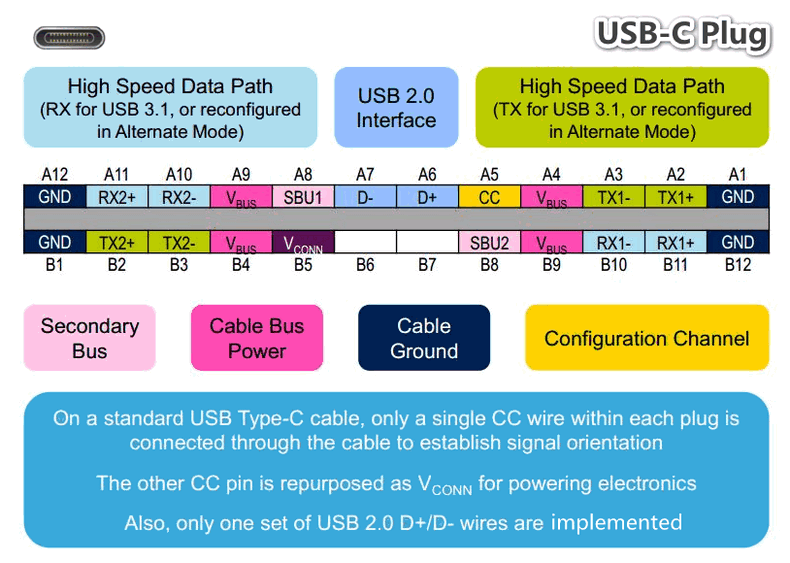
The USB Type- Specification 1.0 was published by the USB Implementers Forum (USB-IF) and was finalized in August 2014.It was developed at roughly the same time as the USB 3.1 specification. In July 2016, it was adopted by the IEC as "IEC 62680-1-3"A device with a Type-C connector does not necessarily implement USB 3.1, USB Power Delivery, or any Alternate Mode: the Type C connector is common to several technologies while mandating only a few of them.
USB 3.2, released in September 2017, replaces the USB 3.1 standard. It preserves existing USB 3.1 SuperSpeed and SuperSpeed+ data modes and introduces two new SuperSpeed+ transfer modes over the USB-C connector using two-lane operation, with data rates of 10 and 20 Gbit/s (1250 and 2500 MB/s).
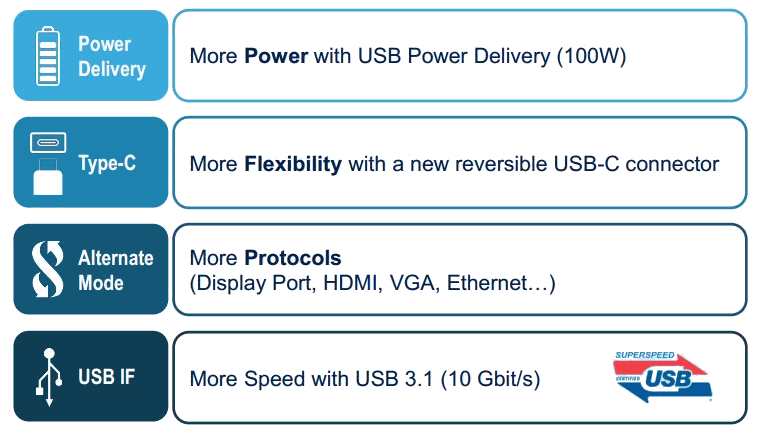
Voltage and Max. Current of USB:

Now many manufacturers say their products have fast charging capabilities, but the true meaning of fast charging is the need for the charger, phone and cable match the charging protocol together to achieve fast charging. For Qualcomm QC, MTK PE and other traditional high-voltage fast charging, the minimum requirements for the cable, the regular ordinary USB cable can be enough. For OPPO, VIVO and Huawei and other high-current fast charging, the demand for cable slightly higher, need to be able to pass the high current , the simplest way is to increase the diameter of the conductor to reduce the resistance can be reached, there is not much technical content.
A true Type-C fast charging cable is a cable that supports the USB-PD fast charging protocol, and this cable has a Type-C connector on both ends, which is a 24-PIN cable.
PD fast charging protocol is the part of the Type-C standard, which supports charging mobiles, tablets and laptops, and supports bi-directional power supply, which has the potential to replace and unify fast charging standards. Its voltage current power combination is very much (5-20v 0-5A 18W 30W 45W 65W 100W), handshake communication process is far more complex than other fast charging standards, involving a certain amount of data communication.
So true fast charging can not be achieved by ordinary usb interface alone, you must use Type-C to Type-C cable to achieve PD fast charging. (Type-C is a 24pin interface with pins dedicated to fast charging communication. While the ordinary USB 3.0 interface is only 9pin, there is no dedicated to fast charging pins, only multiplexed pins). Please refer to the following diagram for a cited description.
USB PD Power Profiles:
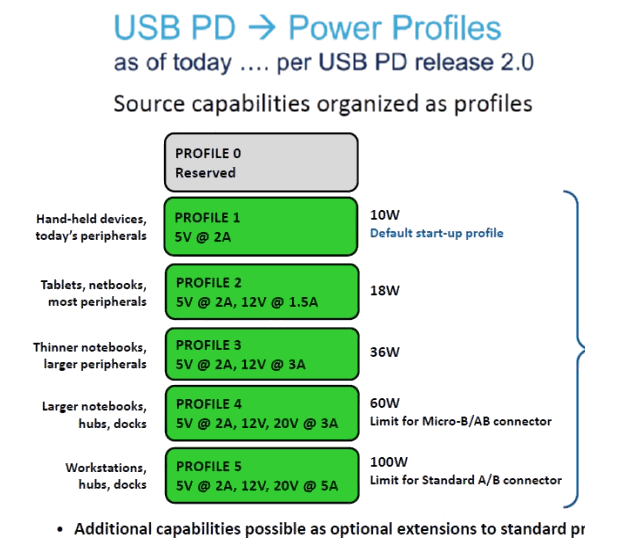
Power Adapter Examples:
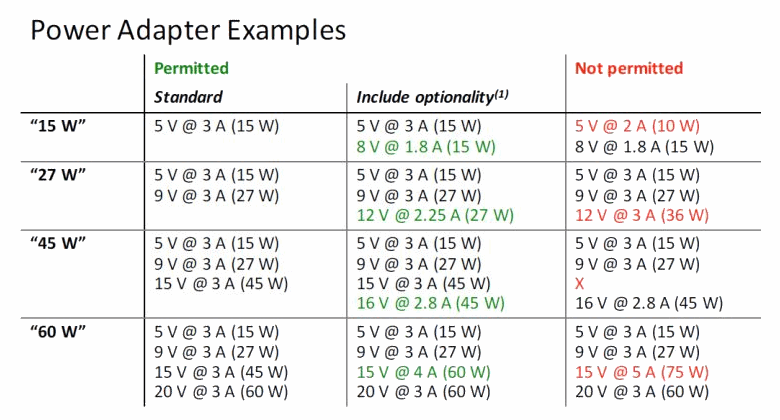
Architecture and key words:
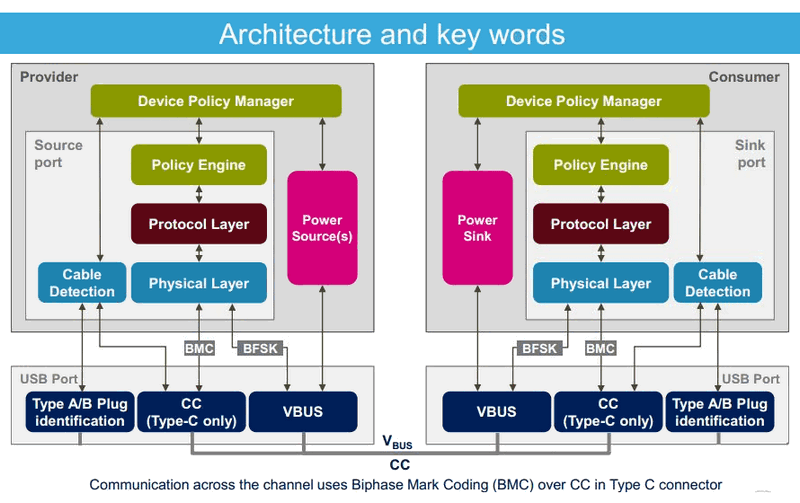
USB Type-C Cable and Connector Specification
Receptacles:
The receptacle features four power and four ground pins, two differential pairs for high-speed USB data (though they are connected together on devices), four shielded differential pairs for Enhanced SuperSpeed data (two transmit and two receive pairs), two Sideband Use (SBU) pins, and two Configuration Channel (CC) pins.
USB PD Stack & Policy:
USB-C receptacle A/B pin layout:
Plugs:
The male connector (plug) has only one high-speed differential pair, and one of the CC pins is replaced by VCONN, to power electronics in the cable, and the other is used to actually carry the Configuration Channel signals. These signals are used to determine the orientation of the cable, as well as to carry USB Power Deliverycommunications.
Cables:
Full-featured USB 3.1 and 2.0 Type-C cable wiring:
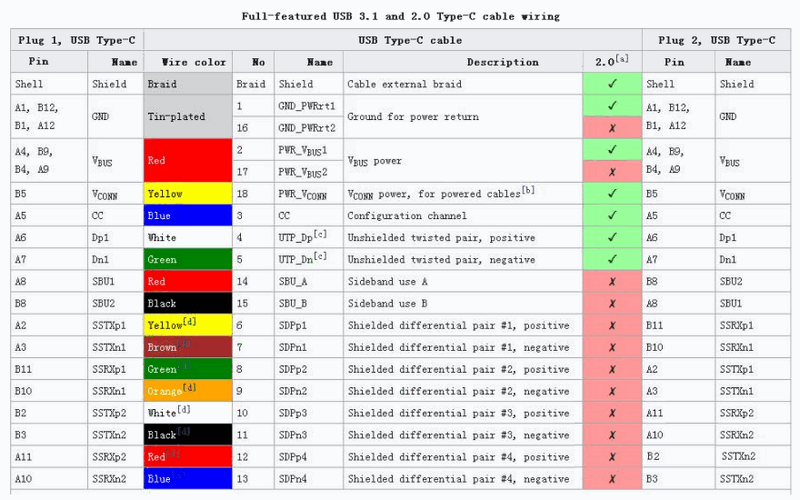
Alternate Mode partner specifications
As of 2018, five system-defined Alternate Mode partner specifications exist. Additionally, vendors may support proprietary modes for use in dock solutions. Alternate Modes are optional; USB-C features and devices are not required to support any specific Alternate Mode. The USB Implementers Forum is working with its Alternate Mode partners to make sure that ports are properly labelled with respective logos.
By HornmicLink_Bob Kuo @230925 19:38











